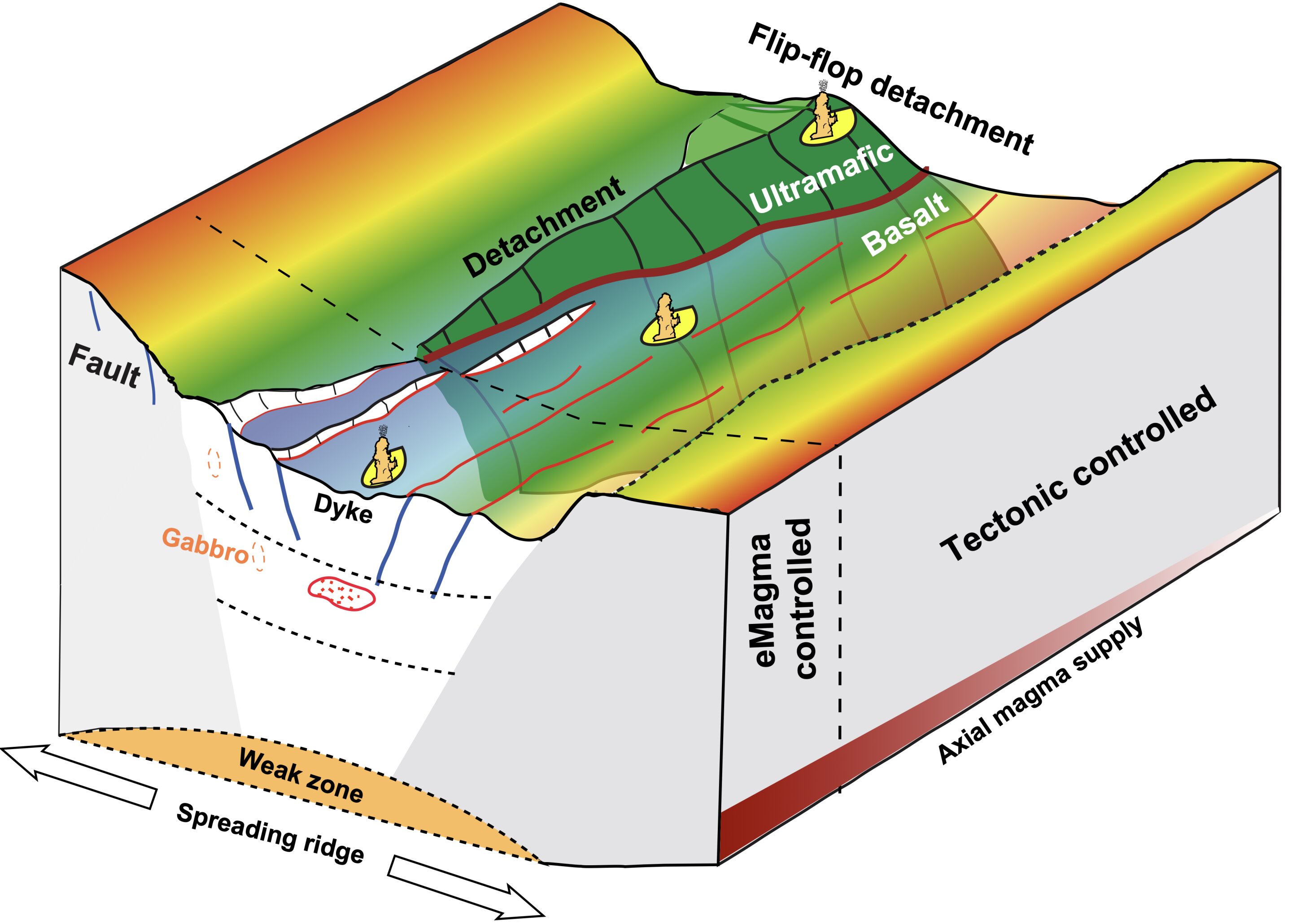
The scientific paper titled “Sulfide Metallogenic Model for the Ultraslow-Spreading Southwest Indian Ridge” by Dr. Tao Chunhui, a senior researcher from the Second Institute of Oceanography, Ministry of Natural Resources, has been published in Science China Earth Sciences. Dr. Tao and his research team have spent more than ten years investigating the distribution patterns and formation mechanisms of hydrothermal activities and associated polymetallic sulfides in the Southwest Indian Ridge (SWIR).
Their research has revealed a wide range of hydrothermal activities with higher frequency and the potential for forming large-scale sulfide mineral deposits, surpassing previous theoretical expectations. Additionally, they have proposed the eHeat-dFault sulfide metallogenic model, which is controlled by local enhanced heat supply and deep faults.
Submarine polymetallic sulfides hold great economic value and are primarily formed through hydrothermal circulation. The driving heat source and fluid circulation pathways are critical elements in this process. Analysis of submarine seismic data has shown that the heat source in the hydrothermal system of the SWIR exhibits localized enhancements, and the associated conduit structures are deeper compared to similar systems in other ridges.
These characteristics are primarily observed in deep magma chambers in areas with strong magmatic activity, deep detachment faults in areas with weak magmatic activity, and flip-flop detachment faults in areas without magma. The prevalent belief is that the spreading rate of the ridge controls the heat source, magma supply, and tectonic processes.
However, Dr. Tao’s study suggests that the type of hydrothermal circulation system, circulation depth, frequency of hydrothermal activity along the ridge axis, and the scale of sulfide mineralization may be determined by a balance between magma supply and tectonic activity.
For the ultraslow-spreading SWIR, local enhanced heat supply and deep fault structures play a more direct role in controlling hydrothermal circulation and sulfide mineralization. The eHeat-dFault sulfide metallogenic model is expected to provide valuable guidance for exploration and mineralization research related to polymetallic sulfides in this unique ridge.
More information:
Chunhui Tao et al, Sulfide metallogenic model for the ultraslow-spreading Southwest Indian Ridge, Science China Earth Sciences (2023). DOI: 10.1007/s11430-023-1108-7
Citation:
Southwest Indian Ocean Ridge develops diverse hydrothermal systems, potential large polymetallic deposits (2023, July 7)
retrieved 7 July 2023
from https://phys.org/news/2023-07-southwest-indian-ocean-ridge-diverse.html
This document is subject to copyright. Apart from any fair dealing for the purpose of private study or research, no
part may be reproduced without the written permission. The content is provided for information purposes only.
Denial of responsibility! SamacharCentrl is an automatic aggregator of Global media. In each content, the hyperlink to the primary source is specified. All trademarks belong to their rightful owners, and all materials to their authors. For any complaint, please reach us at – [email protected]. We will take necessary action within 24 hours.

Shambhu Kumar is a science communicator, making complex scientific topics accessible to all. His articles explore breakthroughs in various scientific disciplines, from space exploration to cutting-edge research.

